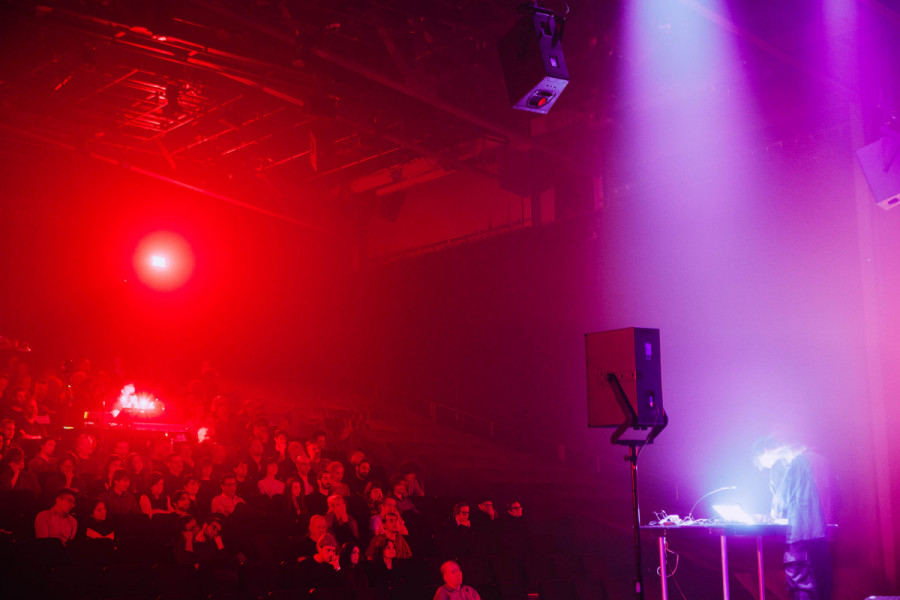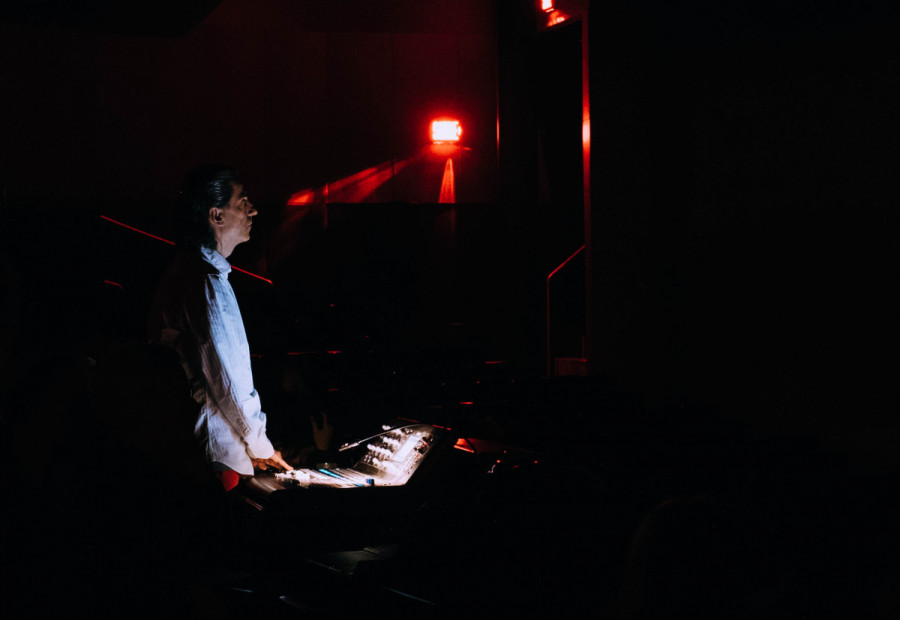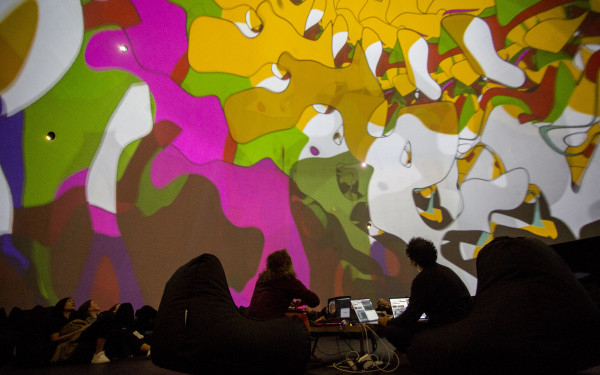Akousma Festival’s XVI Edition Reworks Perceptions Through Immersive Electronic Music
A Program of Spectra Without Bounds
It’s fitting that Montreal-based electroacoustic music organization Akousma hosts its festival in late October. The season, like the festival’s listening environments, are both marked by darkness.
Entering its sixteenth edition, Akousma features a narrower program than previous years, but an enticing one nonetheless.
Split across three venues—Société des arts technologiques, Le Vivier, and Usine C—the festival offers immersive works of electroacoustic music and even some IDM—intelligent dance music.
The festival positions itself principally as a platform for acousmatic music concerts.
For the uninitiated, acousmatic refers to the omission of the visual source from a sound. For the purposes of the festival, acousmatic means sitting quietly in a dark concert hall, surrounded by experimental music.
Related“We have an array of 32 speakers […] and it’s all based on the aspect of immersive sound,” said Louis Dufort, long-time artistic director for the festival.
While the festival aims to facilitate optimal listening experiences with electroacoustic music, it also aims to bridge music cultures, such as those of academic and underground music.
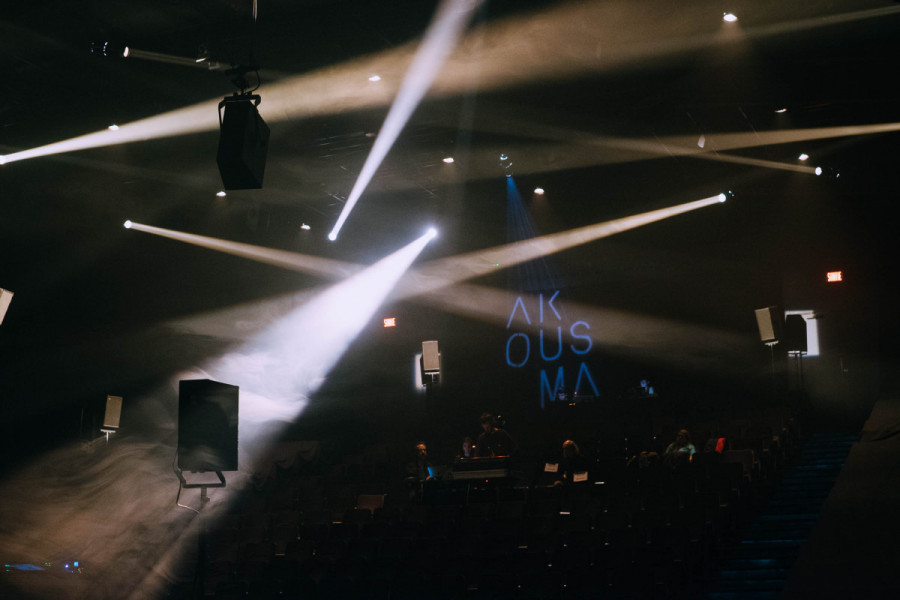
“As long as the sound is very important in the writing of the composer, it can take multiple forms. It can be live, it can be video, it can be tape music,” said Dufort.
References to music history are common and concrete with Akousma, often taking the form of electroacoustic pioneers presenting their work at the festival in person. Younger composers have the opportunity to see their influences, such as Francis Dhomont and Hildegard Westerkamp, in the flesh.
Microscopic details came to the fore during the opening concert. François Bonnet applied his finesse as a sound artist through his spatialization of minimalist composer Éliane Radigue’s Arthesis.
A piece spanning almost 30 minutes in length, it began as steady low-pitched peaks and troughs, just within perceptible range.
From here, layer upon layer of modular synth waves manifested and receded, hovering for periods of time in different areas of the room, deepening the acoustic space. As each sound waned, its spectral anatomy seemed magnified, leaving clear arcs to discern and appreciate.
Also in the opening program was composer Panayiotis Kokoras, whose approach to composition is marked by detailed attention to sound as material, structure, and association.
The name of his piece Qualia, for instance, refers to the subjectivity inherent within perception.
“The way you sense or feel the colour red—it’s a subjective experience and maybe I don’t have the same redness as you experience [it]. The same goes with taste and the same goes with sound.” — Panayiotis Kokoras
“The way you sense or feel the colour red—it’s a subjective experience and maybe I don’t have the same redness as you experience [it]. The same goes with taste and the same goes with sound,” said Kokoras.
“That’s part of the plan in the piece, to give a lot of opportunities to the audience to make their own story as they listen to the piece.”
When asked about his creative process, Kokoras said that “working with sound sources is essential in [his] process.” Yet, part of this involves connecting with the source, and shaping it before digital processing.
“One of the sounds you hear throughout the piece is a squeaky little sound whistle that I played for many hours. It’s pretty annoying if you do that on your own,” said Kokoras.
You may never pinpoint where the squeaky toy Kokoras refers to presents itself in Qualia.
“One of the characteristics of the piece is a very low horn-like sound, and that comes from this tiny little squeaky sound that I have transposed a hundred times and stretched a hundred times,” he added.
RelatedYou can sense the breadth of Kokoras’s process in the work. During the performance, sonic bursts of fireworks and twirling whistles were both mediated by and seemed to become whimsical melodies. They would trickle into existence and then fade into spacious chords that shuddered across the audience.
As the festival nears its end, tonight’s concert features a more disparate, although holistically stimulating program.
On the program is Nicola Giannini, the winner of this year’s Jeu de Temps / Times Play competition, organized by the Canadian Electroacoustic Community.
While dedicating particular attention to spatialization in his work, Giannini strives to maintain the specificity of his sources. “I always try to work with sources that are already physical,” he said.
Leaning less towards intense processing, he depends more on the choice of sounds. He establishes contexts as well.
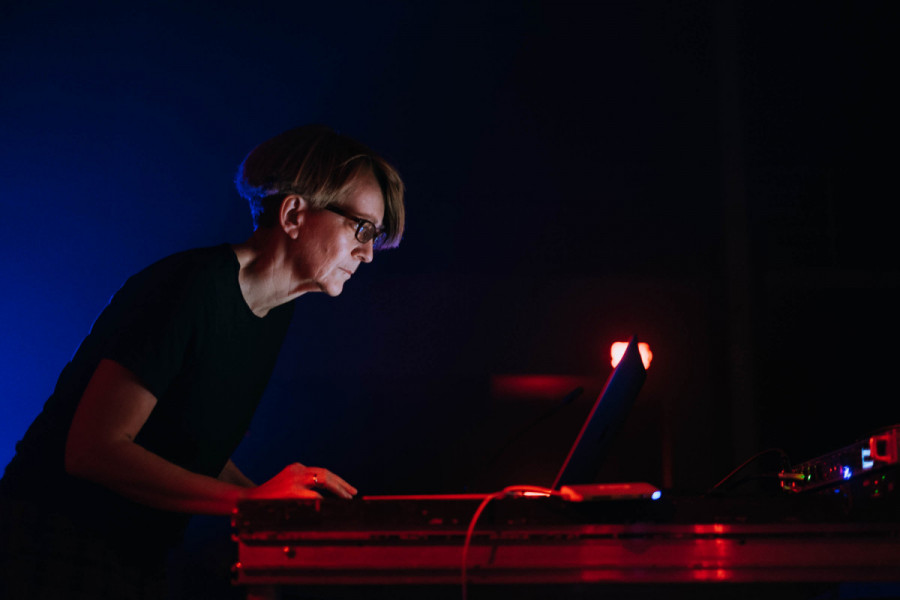
“I see music as a kind of ephemeral architecture, always evolving. You have to build something and then this building moves.”
“I start from this perspective. I compose the space.”
For Akousma, Giannini will present a work exploring the state between dreams and reality. The structure is derived from a poem written for the piece by Elisabetta Porcinai and Alice Nardi. The poem also aims to mediate between femininity and masculinity, experimentation and elegance.
Less of a hypnotic environment than those created by composers such as Max Richter, Giannini’s piece rather explores the impulses rampant during the onset of sleep.
Related“On one hand, we’re relaxed, […] on the other hand, we can experience these fast involuntary movements—they’re called hypnic jerks,” added Giannini. “That also evokes [a] contrast between body and mind.”
International composers Bérangère Maximin and Richard Devine will also grace the stage, the latter presenting a live modular show.
Although very different in form, Devine’s performance will provide technical symmetry to Radigue’s work presented earlier in the festival, as attendees will hear sounds produced through some of the most organic methods in electronic music.
Akousma’s final concert takes place on Oct. 24 at 7:30 p.m. at Usine C.

